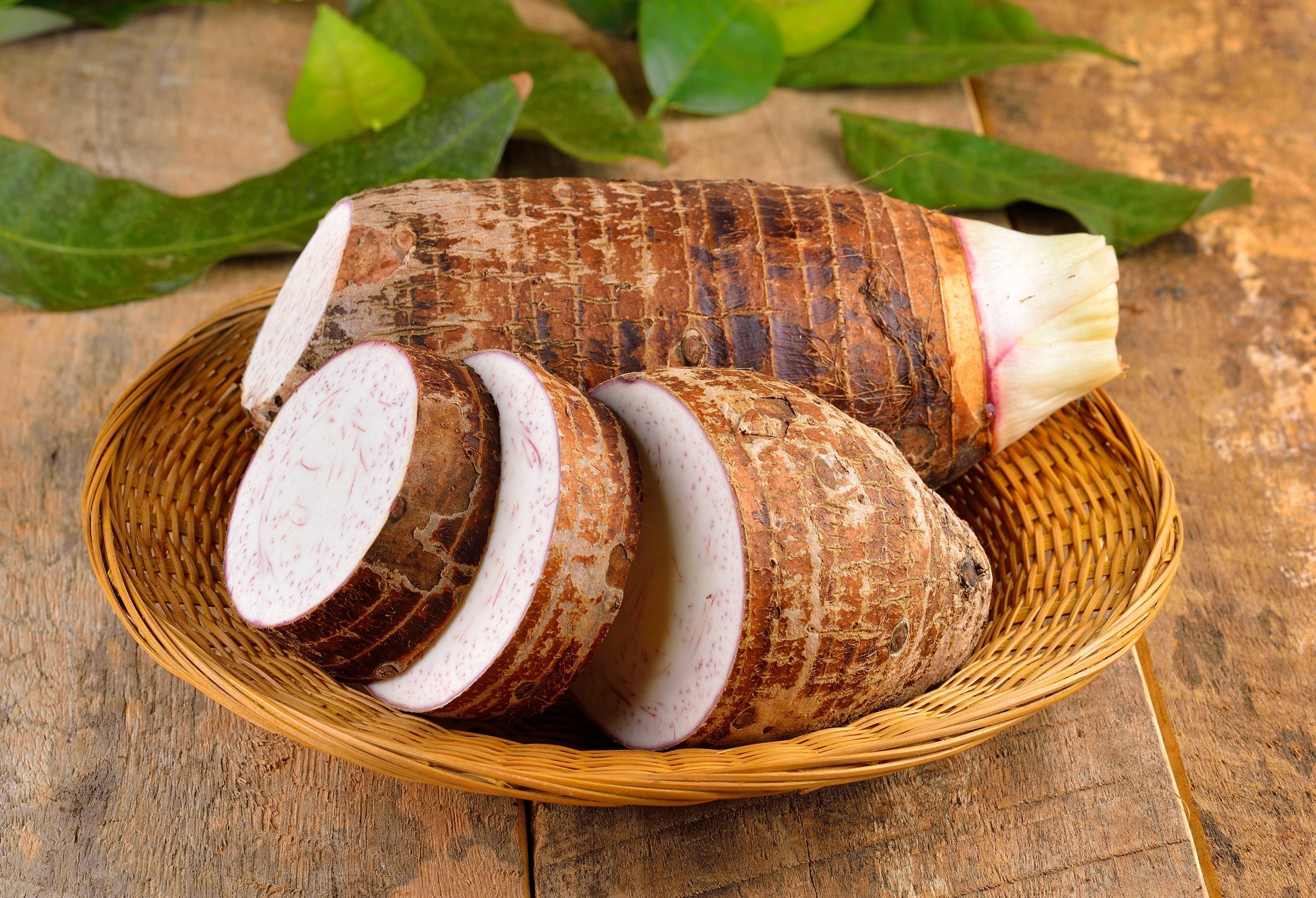
By Shelley Balls
UW Extension, Nutrition
and Food Safety Educator

While visiting Kauai Hawaii years ago we saw fields full of tropical plants with large green leaves. After visiting with some locals, we found out that they were fields of taro. During the rest of our trip, we found taro burgers on restaurant menus, taro-flavored ice cream, and more! Before visiting Hawaii, I had no idea that there was a root vegetable called taro and come to find out it’s one of Hawaii’s staple crops. Taro doesn’t just grow in Hawaii though; you can find it growing in other tropical and semitropical climates all over the world.
• Nutrient Dense
Taro is a starchy vegetable like a potato but with almost twice the dietary fiber. One cup of taro provides 10% or more of your daily recommendation of potassium, magnesium, and vitamin C. Taro also contains other B vitamins, such as thiamin, pyridoxine, riboflavin, niacin, pantothenic acid, and folate, all of which are important for metabolism, energy, and red blood cell production. Taro also has important minerals such as zinc and manganese.
• Cooking with Taro
Taro leaves are similar in taste to spinach but have a thicker leaf, which requires a longer cooking time. Taro root is slightly sweet and nutty in flavor. It’s recommended that Taro root be cooked before eating as it may cause irritation and itchiness if eaten raw. So, what can you make with taro root? You can make baked goods with taro as well as fries, chips, ice cream, or frozen yogurt. You can also add taro to dishes such as curry, soups, and more! Next time you are at the grocery store keep your eye out for taro and try out the options below for cooking!
Taro Chips
Recipe Source: Immaculate Bites
Ingredients:
1 large taro, about 2-3 pounds
Spices of your choice
Oil
Instructions:
Wash hands with warm water and soap for at least 20 seconds.
Cut taro into 2-4 or larger chunks for easy peeling and cutting.
Peel the taro. Look for any spoiled spots, such as bruising and discoloration, in the taro as you peel. Remove the spots if present.
Wash taro immediately to prevent discoloration and leave them in cool water until ready to use or refrigerate for up to 24 hours.
Slice the taro thinly with the help of a slicer/ mandolin for consistent results or even use a peeler. Season with garlic powder, Cajun spice, or salt.
Baked Taro:
Preheat the oven to 350°F. Line baking sheets with foil and coat with cooking spray.
Place seasoned taro on baking sheets in a single layer, spray lightly over the taro. Bake for about 20 minutes turning over slices after 10 minutes or till golden brown and crunchy.
Serve warm or cool. Store in a sealed container.
Fried Taro:
Heat up a large skillet or cast iron with oil up to ½ inch- medium-high heat until hot but not smoking. If using a deep fryer fry at 350°F.
Fry the taro slices in batches, turning once, until golden brown, about 5 minutes. Do not overcrowd the pan (it will make the taro to be soggy and absorb excess oil).
Use a slotted spoon; transfer the taro chips – drain on paper towels.
Store in a sealed container or serve with guacamole or eat on its own.






